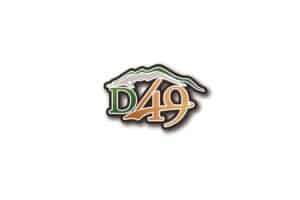According to the Colorado Department of Educationís website, charter schools in Colorado are public schools that operate via a contract ñ- or a charter -ñ with an authorizer like a local school district or the Colorado Charter School Institute. According to the website, there are 264 charter schools operating in Colorado during the 2019-2020 school year.What makes a charter school different from a traditional school?Bill Kottenstette, executive director for the schools of choice unit at the CDE, said charter schools are public schools overseen by a nonprofit board of directors and operated based on a charter between the nonprofit and either the school districtís board of education or the Colorado Charter School Institute.In 2004, House Bill 04-1362 created the Charter School Institute, giving it authority to approve or deny charter applications and oversee the charter schools it approves.To start a charter school, a group of people organize and write a plan for that school and then submit an application to operate it, Kottenstette said. ìThey usually submit the application to a school district. If that district has exclusive chartering authority, they would review the application and either approve or deny it,î he said. ìThey can also submit the application to the Colorado Charter School Institute who would then review that application.îA charter or contract is written between the district and the proposed charter school if the district accepts the application, he said. The approval criteria is the same whether a school applies to a district or to the CCSI, Kottenstette said.ìThe reviewers look for whether or not the school would be a quality school, if the plan is financially viable and if there is anything else, other conditions, the reviewers would want to have as part of the charter,î he said.Andy Franko, iConnect Zone leader for El Paso County Colorado School District 49, said the district, which has exclusive chartering authority, currently has seven charter schools with three additional charter schools that have been approved and scheduled to open to students in the fall of 2020.ìWe have had to deny some applications and a lot of that is a result of the applicants not being able to show a lot of evidence that it (charter school) will be of value to the D 49 community,î he said.EnrollmentOnce a charter has been accepted, the school is required to choose students based on a lottery system, Kottenstette said. In traditional neighborhood schools, students are typically guaranteed enrollment in a school based on their address, he said. However, charter schools are a school of choice and need to have a non-discriminatory way of considering students for open seats.ìNeighborhood preference could be included in the charter with the authorizer, allowing students in the immediate neighborhood preference over students in other neighborhoods,î he said. ìBut within that neighborhood, there would still need to be a random selection process.îSometimes, preference can also be given to children of the founders of the school and for staff membersí children, but that would also need to be specified in the charter with the authorizer, Kottenstette said.There are many things to consider for parents interested in charter schools ó what type of education the school offers, whether there is a bus route if the school is not located in their neighborhood, timelines and deadlines for registering for a charter schoolís lottery and what waivers the school has received from the CDE, he said.FundingBecause charter schools are public schools, they cannot charge tuition, which is often a point of confusion for community members, Kottenstette said. The funding model for traditional schools and charter schools is similar and ultimately stems from the districtís per-pupil funding rate, which is the same for students in charter or traditional schools, he said.ìFor a traditional public school that is part of a district, funding per student goes to the district and the district determines how to spend those funds,î Kottenstette said. ìFor a charter school, the per-pupil funding goes to the district, assuming the district is the authorizer, and then the money is passed on to the charter school. The district can retain 5 percent for administrative purposes.îThe biggest difference in financing strategies is under the charter model, most of the financial decisions are made at the school level; at a traditional school, the district decides how to allocate funds.Franko said some charter schools contract with a management organization, like a third-party educational service provider, to operate their school. When they choose that route, there is support from that provider similar to the support traditional schools receive from their districts, he said. Often those contracts come with a cost, however.ìThe perception is that a charter operated by a third party is receiving funding from that third party, but it is actually the opposite,î Franko said. ìThe school pays for that service. If they do get funding from that third party, it will usually be in the form of a loan, not a gift. The school will have to start paying it back. Sometimes, it is a grant but oftentimes it is loaned.îLegislation passed in 2017 requires districts to share funds it receives from mill levy overrides equally with charter schools, Franko said.Education standardsThe education standards for charter schools is the same for traditional schools, but charter schools can obtain waivers regarding how those standards are met, Kottenstette said.ìCharter schools have the responsibility to meet state standards but they have flexibility in the curriculum they choose to offer,î he said. ìYou tend to see more diverse educational models with charter schools because those decision are made at the school level.îFor example, take the D 49 traditional school versus the Pikes Peak School of Expeditionary Learning, a D 49 charter school. The traditional school is simply put, a standard public school model. PPSELís model focuses on learning experiences, which includes more hands-on lessons and field trips, Franco said.ìFor schools like D 49ís Rocky Mountain Classical Academy or Grand Peak Academy, the educational approach would not be significantly different from that which you would find in a traditional public school, but they do some things differently,î Franko said. ìMaybe they focus on character education in a different way or they follow the classical education approach.îD 49ís commitment to creating a robust portfolio of school offerings for students includes charter schools and Franko said D 49 has benefited from having multiple charter school options.ìOne of the consistencies I see across charter and traditional public schools is that, in a lot of ways, they are composed of the same DNA,î Kottenstette said. ìThey are run by passionate educators whose hearts are in doing right by the families they serve. Although their models may look different, their missions are to do right by kids and families.î





